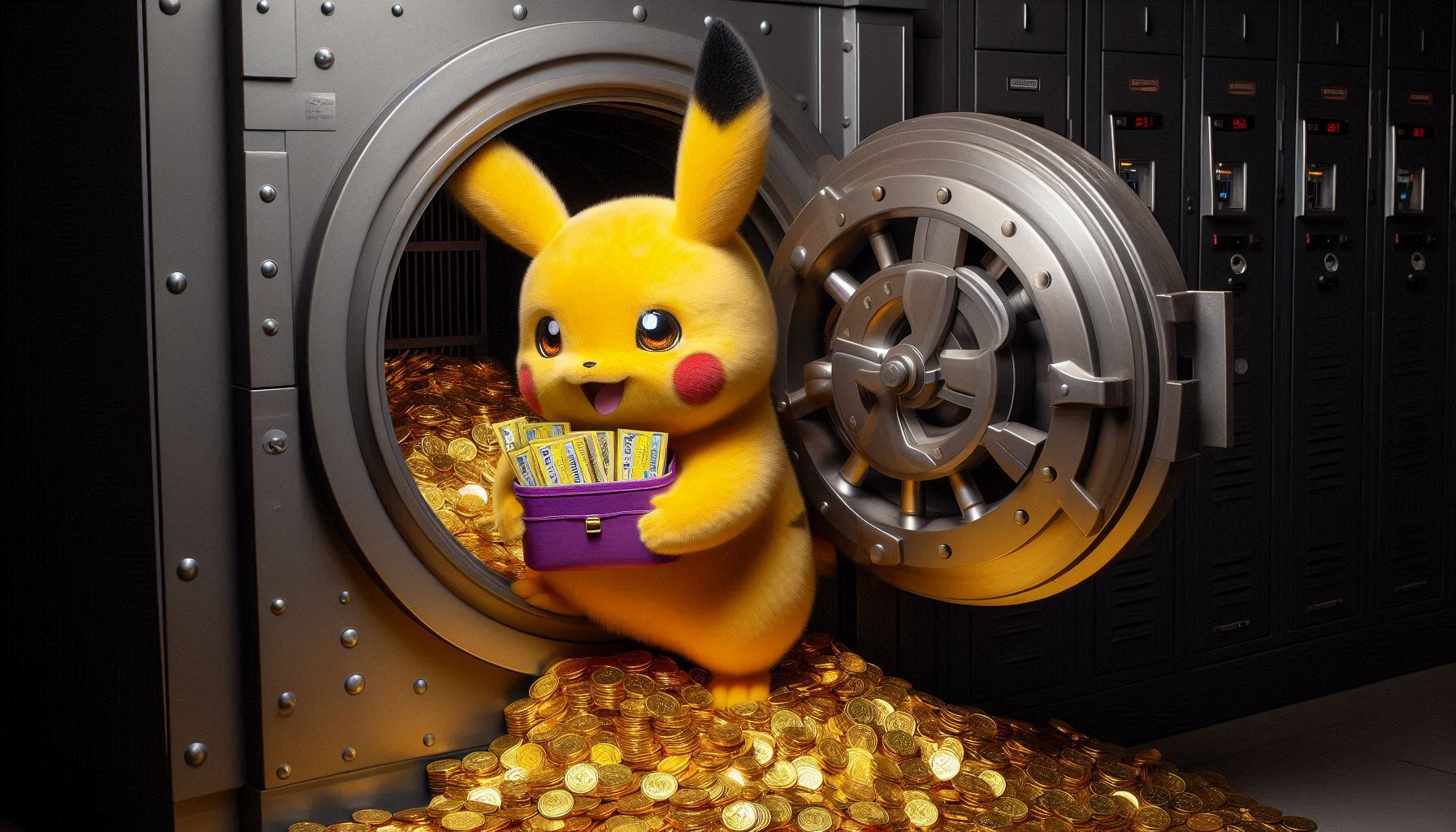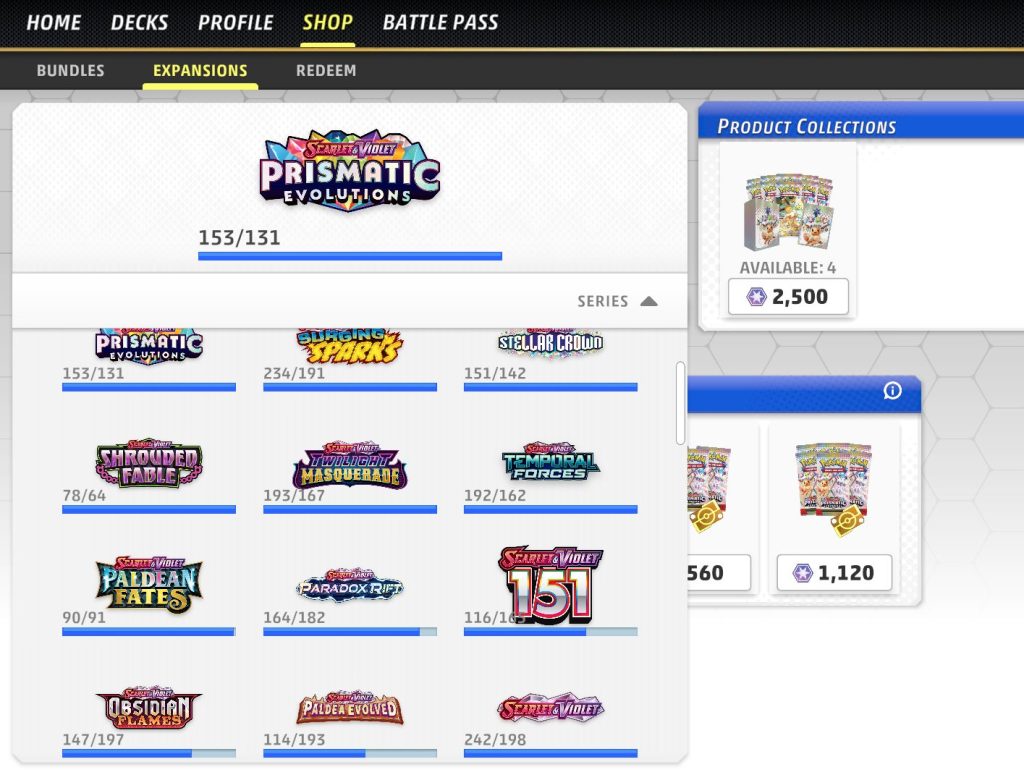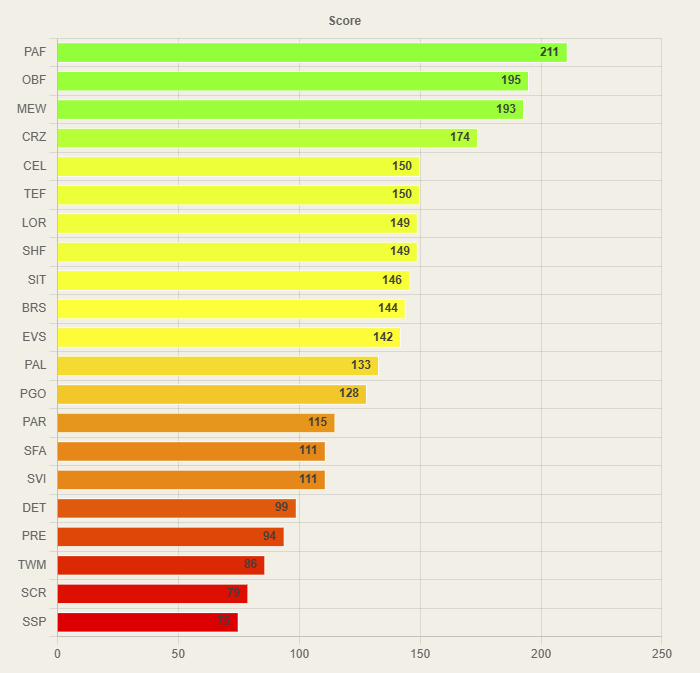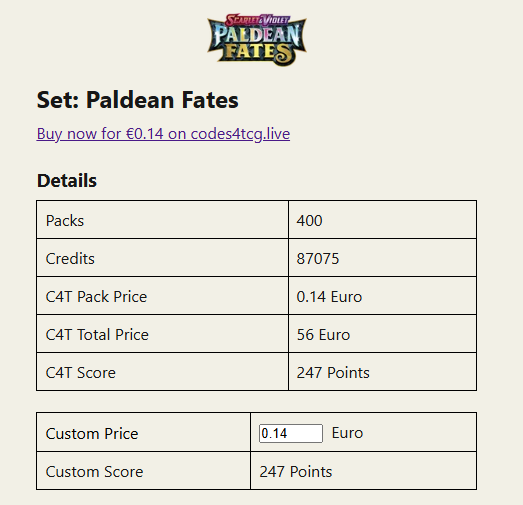Dein Warenkorb ist gerade leer!

Dusting Scorer @ 4TCG.live
Over the past couple of weeks I worked on a PTCGL Dusting Scorer webapp released on dust.4tcg.live. It shall aid in making a better informed decision for what pack codes to buy for Pokemon TCG Live, by taking pack code prices into account to create a cost-value ratio.
Intro
Everyone who ever researched the PTCGL economy knows the genius videos of TrustYourPilot. I already had my shop running and was still clueless, trying to come up with my own pricing model. Bad idea, it makes no sense without looking at seemingly random numbers to understand the matter.
There is also a popular but outdated dusting simulator on the web. I partially based my data on their great work. I would love to get into a conversation with the authors but I have found no contact information so far.
So I kicked off this project and I hope it delivers additional value already, by delivering a (hopefully) more accurate calculation.
Gains?
What worth can be gained from redeeming pack codes?
Playable cards and credits for excess cards to (in turn) craft more playable cards!
In the end, playable cards is what we want.
Which cards are considered playable is rather subjective and also limited by the state of PTCGL, with expanded format being incomplete and GLC not on the horizon.
Just as in real life, pulling a playset of the ultra rare card you desire, is very unlikely.
So you’re mostly better off to try and farm credits, thus your goal should be to get the most credits for your money.
Virtual redemptions
Just for completeness, there is one thing you might want to take into account when picking a set.
Virtual redemptions = packs/cards from Battle Pass, in-app Shop, crafting
To farm more, you should pick a set from which you already have a substantial amount of virtual redemptions. Those redemptions do not influence your 400 per-set code redemption limit, thus you can farm more credits in total, because you will hit more playsets. The actual impact of this, is a topic for the development Roadmap.
So when picking your set for dusting, have a look at your set completion data in PTCGL.

Set Dusting-Quality
TrustYourPilot coined the rule of the pinky toe: The smaller the set, the better it is for credit farming.
I have another assumption: A low count of rares is the simplest, most determining factor to find a great modern set for dusting, because there is 1 in every pack and they give noticeable amounts of credits.
That also gives a reason why Obsidian Flames is so randomly good. It has a very low count of 10 different rare cards. It shares this trait with other great sets for dusting like SHF and SFA.
If you combine and extrapolate those assumptions you get Celebrations.
A very small set with high rarity cards that farms an unrivaled amount of credits.
Detective Pikachu bites the dust in comparison. It is a tiny set too, but it contains commons too. It still performs very well, but only half as good as CEL.
While reverse holos are nice to look at, they make things harder when trying to complete physical or virtual master sets. Those can really only have a positive impact on dusting if counts are small enough for you to hit playsets.
Dusting Scorer
Here is a screenshot of a sample run on dust.4tcg.live.
The higher the score, the better the cost ($) to value (Credits) ratio.
The prices for creating those charts are obviously the prices from my shop.

By clicking one of the bars you get the current set details page. On this page you can also a custom price and calculate your own scores this way.

Thoughts on pokedata.ovh
On the hunt for creating more realistic numbers, I discovered the following topics.
Drop rates
The percentual drop rates seem quite fitting, but they are also differing from set to set. I have no idea about their origin. Adapting those could refine the results.
Parallel Foil
I do not see the simulator distinguishing between parallel- and non-parallel variants for calculating excess numbers. This actually seemed to be the main cause for numbers being off. (Edit: WRONG)
More uniform scores?
I find it funny, that in an ideal world the the scores should be much more uniform then they actually are. The 1 variable part (the price) could be adapted to give a more similar cost-value ratio. In the example screenshot scores are ranging from e.g. 75 to 211, while bottom and top are both standard legal sets.
It does not really make that much sense, does it?
Collaborators welcome
Honestly, my head is spinning from all this dusting theory. Help could range from reviewing, feedback, comparisons to real world examples, adjusting numbers, etc…
The data the simulation is based on is open-source. I might even open-source the backend that does the simulations and calculations, if there is people interested.
Please contact me if you want to collaborate. Maybe with combined powers we can make this even more accurate and useful.
Anyway, I will add new sets as they come out and hope it helps you decide what pack codes you will get.